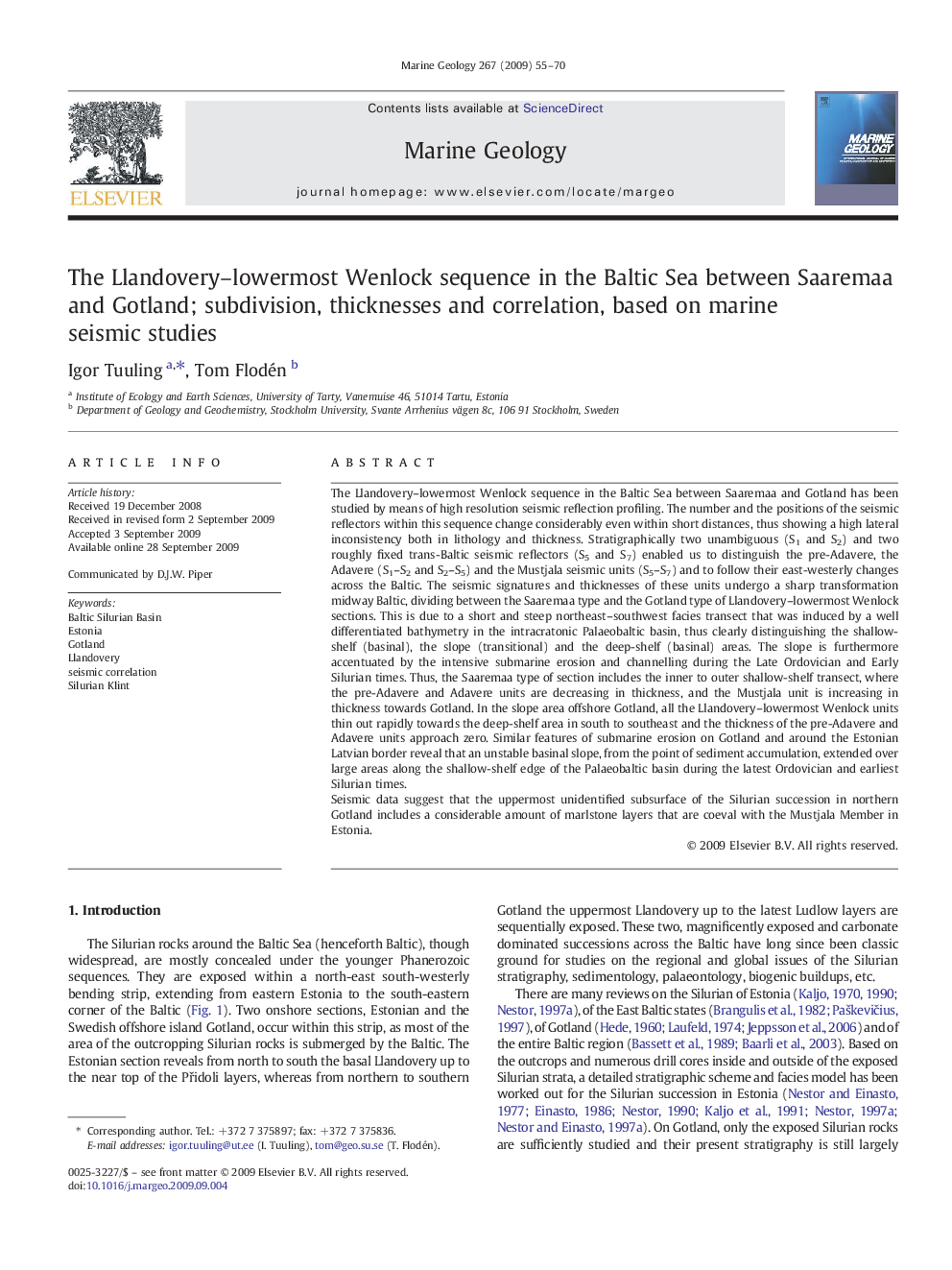| Article ID | Journal | Published Year | Pages | File Type |
|---|---|---|---|---|
| 4719054 | Marine Geology | 2009 | 16 Pages |
The Llandovery–lowermost Wenlock sequence in the Baltic Sea between Saaremaa and Gotland has been studied by means of high resolution seismic reflection profiling. The number and the positions of the seismic reflectors within this sequence change considerably even within short distances, thus showing a high lateral inconsistency both in lithology and thickness. Stratigraphically two unambiguous (S1 and S2) and two roughly fixed trans-Baltic seismic reflectors (S5 and S7) enabled us to distinguish the pre-Adavere, the Adavere (S1–S2 and S2–S5) and the Mustjala seismic units (S5–S7) and to follow their east-westerly changes across the Baltic. The seismic signatures and thicknesses of these units undergo a sharp transformation midway Baltic, dividing between the Saaremaa type and the Gotland type of Llandovery–lowermost Wenlock sections. This is due to a short and steep northeast–southwest facies transect that was induced by a well differentiated bathymetry in the intracratonic Palaeobaltic basin, thus clearly distinguishing the shallow-shelf (basinal), the slope (transitional) and the deep-shelf (basinal) areas. The slope is furthermore accentuated by the intensive submarine erosion and channelling during the Late Ordovician and Early Silurian times. Thus, the Saaremaa type of section includes the inner to outer shallow-shelf transect, where the pre-Adavere and Adavere units are decreasing in thickness, and the Mustjala unit is increasing in thickness towards Gotland. In the slope area offshore Gotland, all the Llandovery–lowermost Wenlock units thin out rapidly towards the deep-shelf area in south to southeast and the thickness of the pre-Adavere and Adavere units approach zero. Similar features of submarine erosion on Gotland and around the Estonian Latvian border reveal that an unstable basinal slope, from the point of sediment accumulation, extended over large areas along the shallow-shelf edge of the Palaeobaltic basin during the latest Ordovician and earliest Silurian times.Seismic data suggest that the uppermost unidentified subsurface of the Silurian succession in northern Gotland includes a considerable amount of marlstone layers that are coeval with the Mustjala Member in Estonia.
